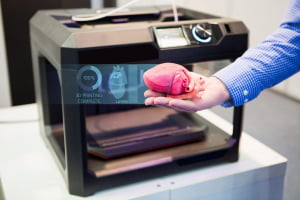
Medical imaging technology gives scientists and medical professionals the ability to research the human body, how it works and how it is affected by disease and viruses.
There have been many advancements in medical imaging over the course of history which have improved our ability to diagnose and treat a whole range of different illnesses and these advancements continue every day.
The first technology that can be connected to medical imaging was the microscope which was invented all the way back in the 16th century. This was a huge breakthrough as there was nothing similar around at the time that allowed this level of insight into biology.
The microscope allowed for the discovery and study of cells, life forms and other biological matter which had previously been unseen by the human eye. As time went on, better lenses were made which increased the magnification of the microscope and allowed for further discovery.
By the late 1800s, the microscope had allowed many to find new and interesting facts about how the human body worked, which paved the way for new medical research, including the basis of what we now know to be modern neuroscience!
The late 1800s also saw the invention of the X-ray which opened up a whole new world of imaging. This allowed doctors and medics to look inside the human body without needing to perform invasive procedures in order to study cells under a microscope.
This invention led the way for rapid advancements in medical imaging, and the ultrasound was created in 1956, allowing for even further examination of the soft tissues in the body.
The CT scan followed and gave us the ability to study images of the body in 3D, showing an even more in-depth and detailed view. By 1977, the MRI had been invented which gave a never-before-seen look at the human brain, allowing a further understanding of how it worked.
Today, medical imaging services are used every day for a whole host of reasons and it is difficult to think that there was once a time when patients were treated without access to it.
 Many English NHS hospitals are dealing with a “huge backlog” of scans, according to a recent report from the
Many English NHS hospitals are dealing with a “huge backlog” of scans, according to a recent report from the 


 A growing number of hospitals and other healthcare organisations around the world are adopting cloud-based systems, which is helping to drive digital transformation in the area of healthcare.
A growing number of hospitals and other healthcare organisations around the world are adopting cloud-based systems, which is helping to drive digital transformation in the area of healthcare.


 Nearly three-quarters of Brits have given their support for data sharing of their medical information, so long as it goes towards benefitting others.
Nearly three-quarters of Brits have given their support for data sharing of their medical information, so long as it goes towards benefitting others.